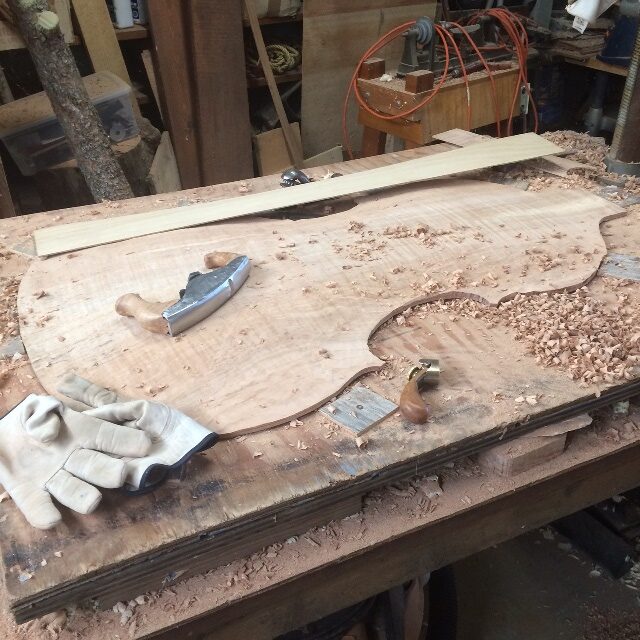Back Plate Arching
Traced and cut out the Plate
When I last posted, I had flattened the back plate, using a plane, but the shape was still oversized.
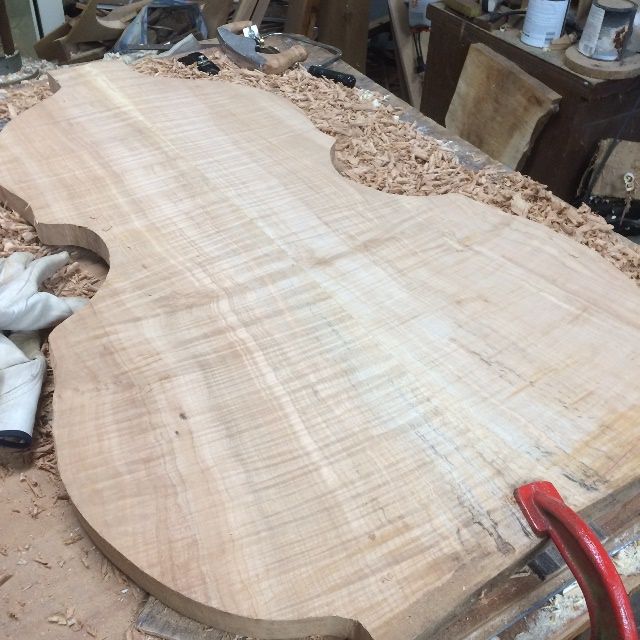
So I traced out the plate shape using a small section of plastic pipe as a guide, and a ball-point pen inside the pipe to make the mark. Then I cut out the plate using my very old Craftsman “Auto-Scroller” saber saw.
My beloved wife, Ann, bought me this saw when we had been married for less than two years, and it has served me well for the last 38 years, but this may be the final plate it will cut out. It overheated rather badly during the cut. 🙁
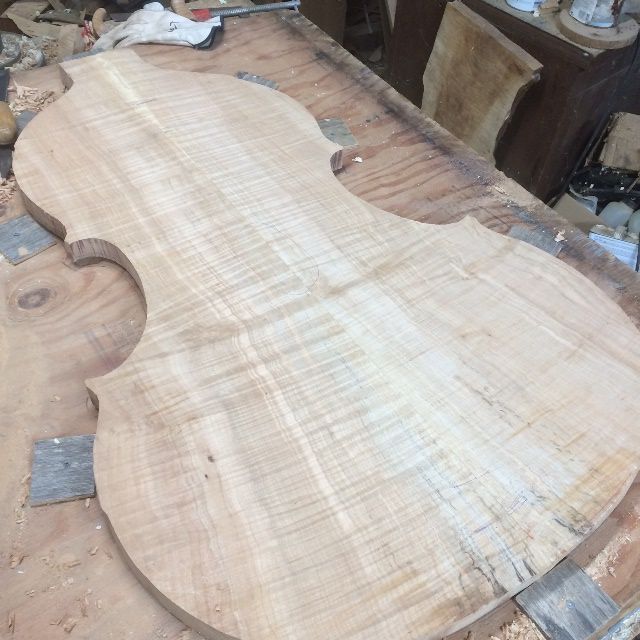
Once the plate was cut out, I used my curved-sole scrub-plane to remove waste wood, and rapidly bring the plate to near the proper thickness around the edge. As the thickness gets close to the target dimension, I switch over to the Ibex Finger-plane with the toothed blade and the wooden handle, to complete the thicknessing of the plate edge. The Oregon Big Leaf Maple is much more difficult to carve than the Spruce was, both because it is harder, and because the grain is highly flamed, meaning that it changes directions every centimeter or so, resisting all efforts to smoothly plane off the wood. The toothed plane helps, but when I start getting close to the right thickness, I will have to switch over to a scraper before the tear-outs from planing are too deep to be removed.
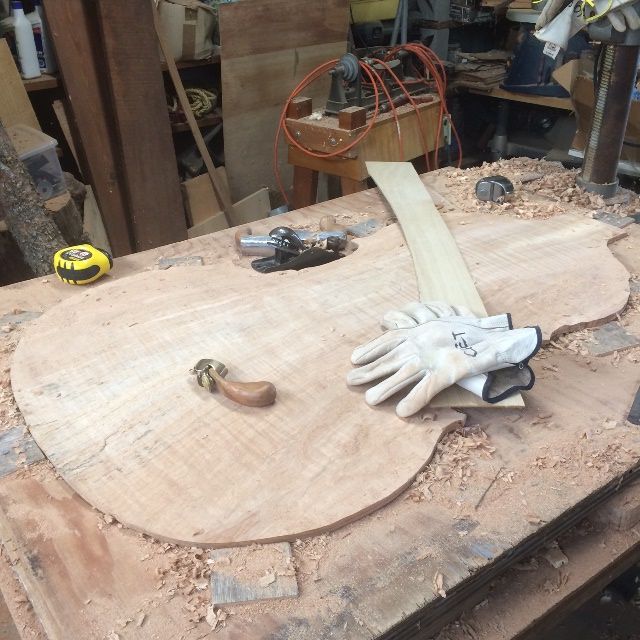
You can see the longitudinal arching template in the above photo: it is just a thin piece of plywood with an 11′-3″ radius circle section cut out of it so as to leave the correct arching height in the center. I used that to help me establish the longitudinal arching. The Ibex plane is on the plate, and the scrub-plane is almost out of sight behind a small block-plane in the background. The small block-plane is helpful for smoothing the ridges left by the scrub-plane.
I am working to the rough sketch I made before beginning, with the plan for the back arching: (I did change the plan a little. I realized that I could extend the arching a little further “north,” as I have tapered the entire garland a little, so that the bend in the upper bouts will not be so severe, and the arching may be able to follow it a little way before flattening out to avoid the compound curve. It’s worth a try, anyway, and will not hurt anything.)

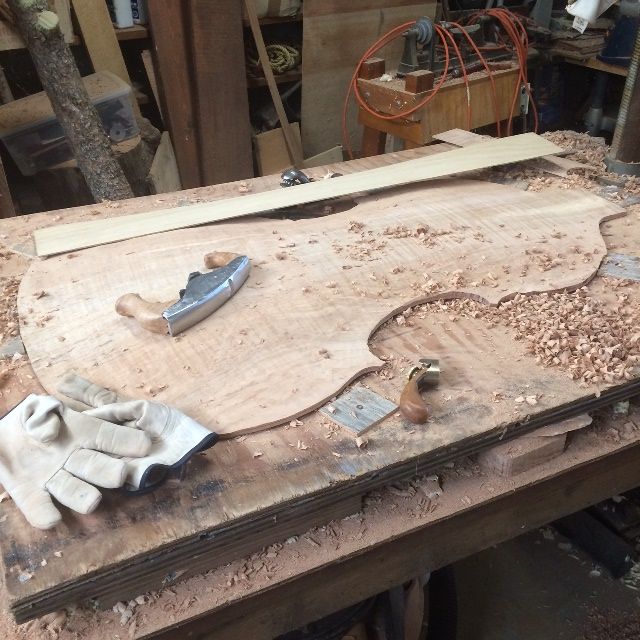
My hands and shoulders were getting too tired, so I went inside and used small finger-planes, files, and scrapers to refine the scroll. I am waiting on an order of carbon-fiber reinforcement materials to complete the neck, but other than that, I am pleased with how it is turning out.

I also completed the scraping of the Sitka Spruce belly, and it is pretty much ready to be glued to the garland.
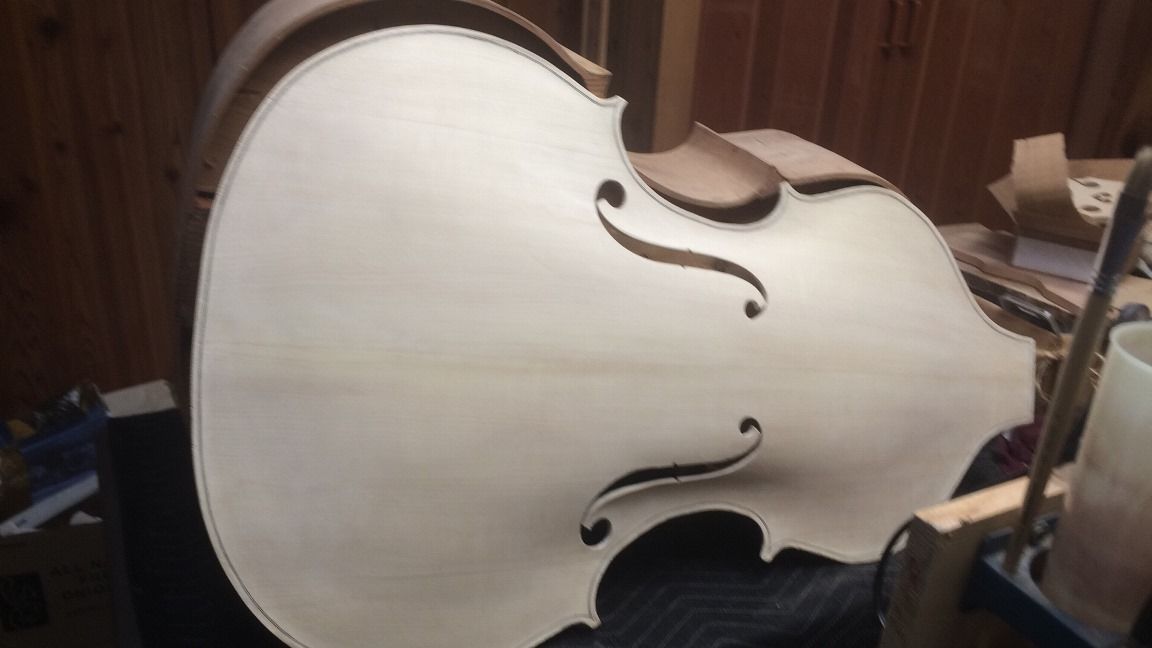
I pretty much wore myself out on this stretch: I’m looking like a tired old man, here. And I thought I was smiling…
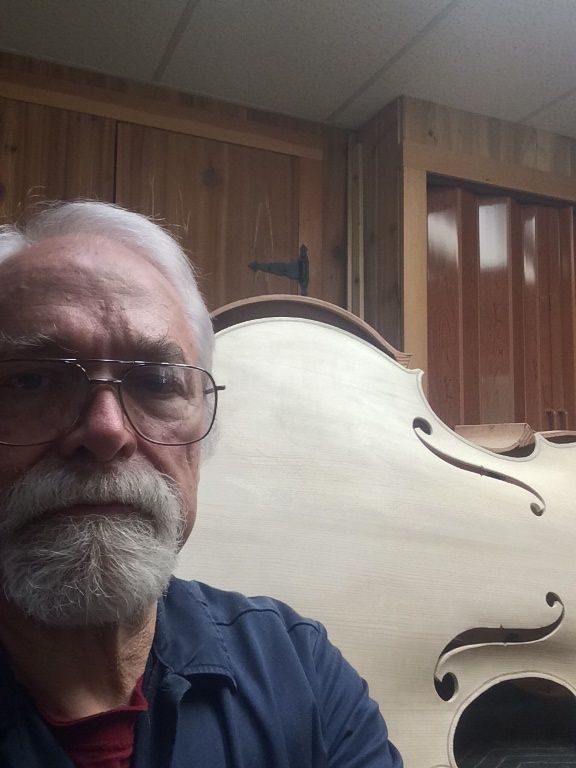
Anyway…that is the current status.
Thanks for looking.

